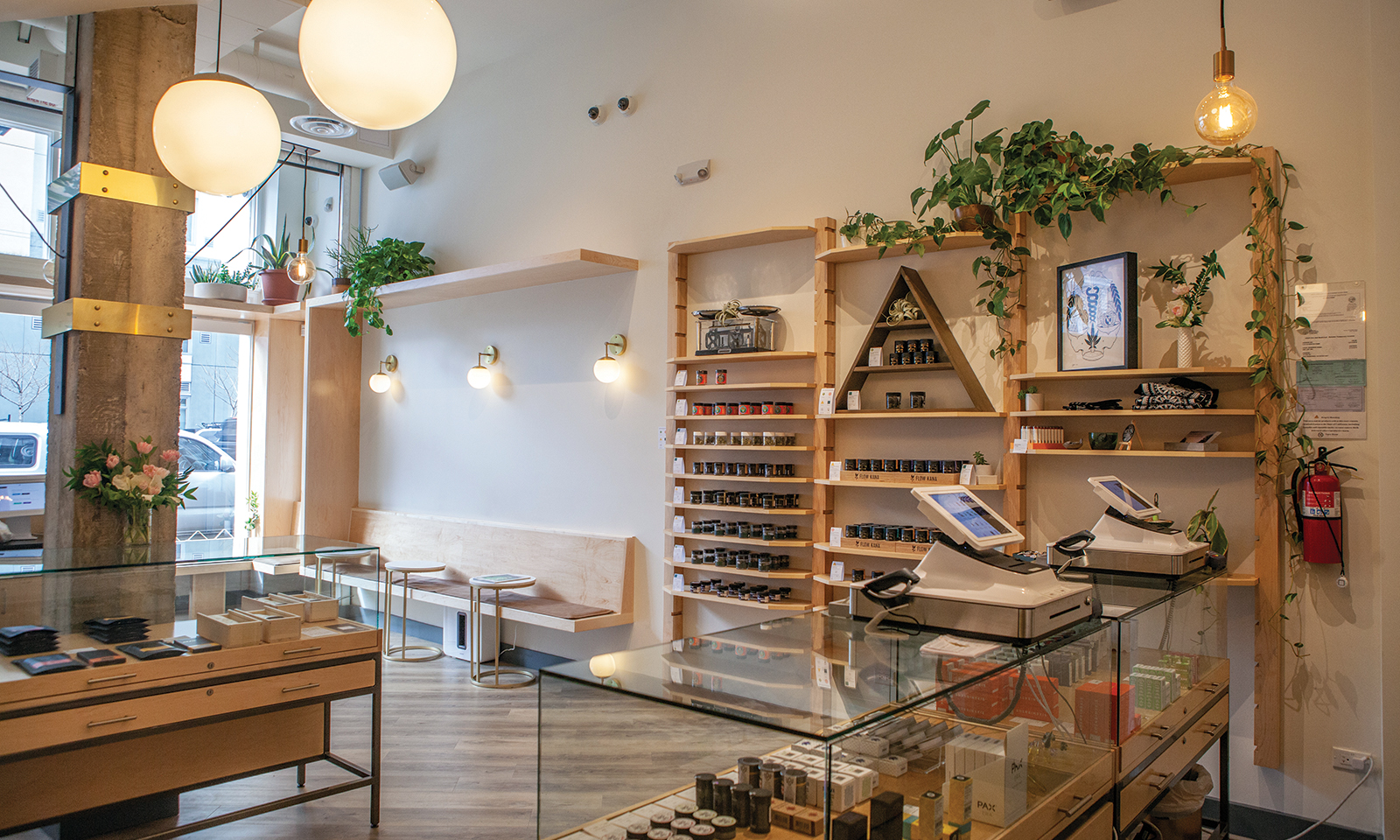Outgrowth of Adaption: The Vapor Room Returns
The Vapor Room, which many consider a San Francisco institution, has reopened after being shut down by the feds.
A lingering sheet of smoke and vapor looms lazily above everything — I’ve watched it for hours and it never dissipates. Neither do the all-enfolding effects of the outsized hash bong rip I took at least three hours ago, but neither one bothers me, so I let it go.
It’s roughly 2006 and I’m in San Francisco’s “Lower Haight” neighborhood — my first home in the Bay Area — where the razing talons of gentrification have only just begun to scrape the surface of the street. Even though it’s only a few blocks separated from the Haight-Ashbury neighborhood, the vibe is entirely different from the Summer of Love historical reenactment/“Lord of the Flies” sh*tshow going down in and near Golden Gate Park. Here it’s a lot less “Mad Max” meets “Wooden Ships” and a lot more “Sucka’ Free City” meets “White Punks on Dope,” two worlds which more or less intersect precisely where I’m sitting, in the first incarnation of the Vapor Room.
The Vapor Room is one of San Francisco’s original medical dispensaries. In 2004, it created a unique community space for those looking to learn about and experience the benefits of medicinal cannabis; in 2012, that community was shattered by the federal crackdown on dispensaries, which closed the doors on the Vapor Room permanently — or so it seemed. As California cannabis once again enters a new era, the Vapor Room has reemerged in a new location, ready to educate and guide a new generation of cannabis consumers.
The Vapor Room Under Prop 215
For those who didn’t live through the uncertainty and excitement of the Prop 215 days in California, it’s hard to grasp the electric current of freedom and fear that permeated everything — freedom to produce, distribute and consume cannabis products with little to no interference from local law enforcement, plus constant fear that the feds would come and kick down the door of the lounge you were smoking in.
It didn’t go down quite like that, not for the Vapor Room, but ultimately the result was the same. The Vapor Room was always a product of adaptation: When San Francisco’s then-new zoning checkerboard was rolled out by former San Francisco Sheriff Ross Mirkarimi, the Vapor Room made a serendipitous jump, moving one door down into the space vacated by a local video store that had just closed for good.
“When those first regulations came down from Mirkarimi, we had to literally move six feet,” says Martin Olive, co- founder and president of the Vapor Room Cooperative.
But ultimately, when then-U.S. Attorney Melinda Haag went on a medical dispensary killing spree in the summer of 2012, the Vapor Room was among the casualties. The feds said the second location was still too close to a local park and forced the city institution to close its doors permanently.
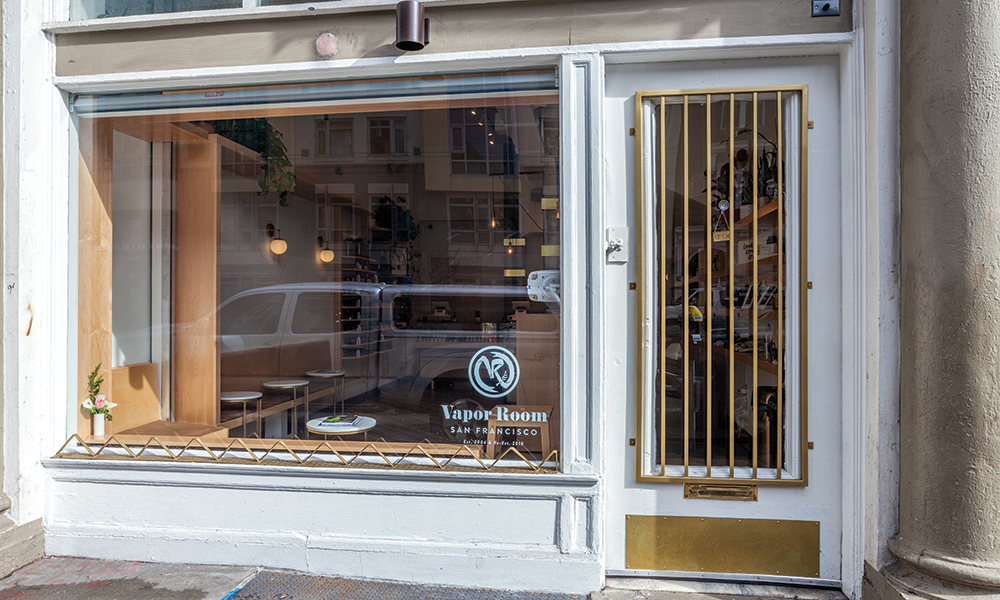
To say I have a personal connection to the Vapor flirts with an understatement: I met my wife in the original location — she a nurse and caregiver picking up medicine for a patient, me a roughly hewn, self-styled writer unknowingly teetering on the brink of a journalism career. It’s far from the only relationship born in that place, a smoke-choked community center for bud- loving “Lower Haters” of all stripes and a mecca for anyone in San Francisco seeking out the only shelf in the city that had no bottom; everything that made it in the dispensary was top shelf.
This was before all the branding came to cannabis, so I never knew that the Afgoo full melt hash that carried me through my early 20s like a magic carpet was grown and washed by the now famous “Mr. Sherbinski,” who came to fame as the co-creator of Gelato.
“I literally bought the first bags of grass from that guy,” Olive says. “Now, he’s massive.”
Sherbinski confirms that the Vapor Room was the first dispensary he ever sold weed to.
“I had actually just harvested my first little two or three lights from my house in SF and got the list from the Department of Health listing what the legal dispensaries were, and the Vapor Room was like my third or fourth shop I visited,” he says. “When I walked in it was like a ‘That ‘70s Show’ kind of vibe — all types of characters — and that’s where I met [Olive]. He loved the product I had and I liked the vibe and we started off all good.” Sherbinski added that Olive and the ethos of the Vapor Room had a lasting impact on his ideas about cannabis. “I learned the meaning of compassion from what I saw in that shop,” he said.
In the old days, the medical compassion program meant any Vapor Room cooperative member could walk in and get a free joint or the equivalent amount of cannabis free of charge — no questions asked, no judgment. It didn’t matter if you were a starving artist, a broke student, someone on a fixed income or just a working person waiting on a paycheck, you could get some cannabis medicine if you needed it, something that’s impossible to offer under the state’s new adult-use regulations.
The highs of the Prop 215 days were towering, but the lows could be crushing: When the Vapor Room managed to dodge annihilation by 6 feet, the entire city celebrated, our neighborhood most of all. When the curtain came down on that space in 2012, it was a bullet that tore through the heart of the community. We all knew we had just witnessed the final crash of a wave the likes of which we are unlikely to see again in our lifetime.
Vapor Room 2.0
The new Vapor Room, which had its formal grand opening in February, isn’t the old space, but it is undeniably still the Vapor Room — Olive calls it “Vapor Room 2.0.” The OG location was part of the zeitgeist during a golden age of cannabis freedom, but what really held everything together and brought people from all corners of California was the dispensary’s legendary selection, and that emphasis on quality is still very much intact.
“We’re treating it more as one of those seasonal restaurants that change their menu frequently, as opposed to being the Walmart of weed,” Olive says. “It’s kind of what we did at the old Vapor Room: Instead of bombarding you with 50 strains, you can count on us to do the initial best-of-market picking for you.”
Part of that “best-of-market” strategy is motivated by a simple desire to deliver the best product possible, but the Vapor Room has always been rooted in patient education, and there’s a new emphasis on promoting sungrown outdoor cannabis as a sustainable alternative to indoor farms with electric lights.
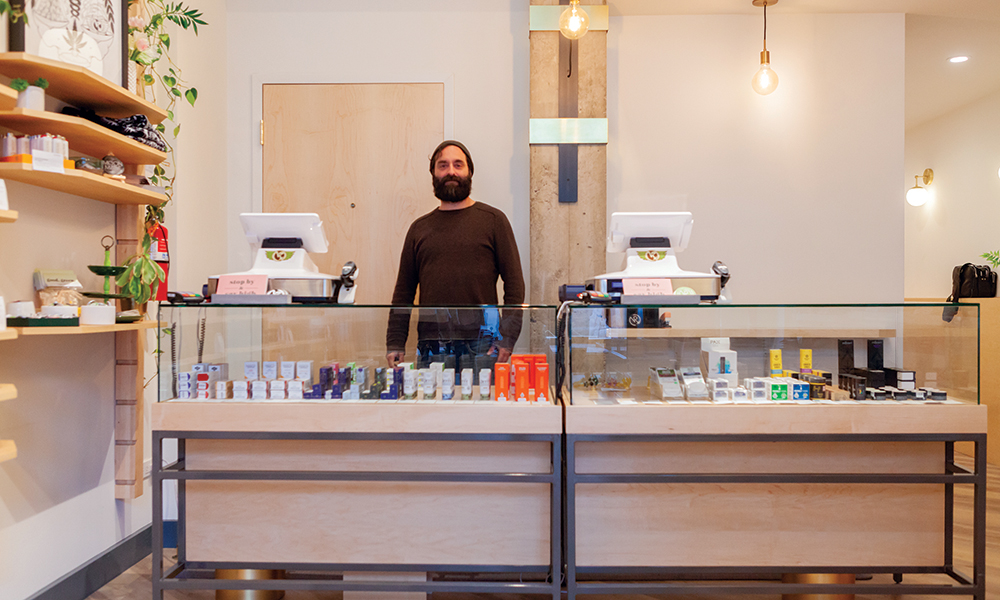
Tina Gordon is Olive’s business partner and the founder of Moon Made Farms, a line of outdoor cannabis she personally cultivates in southern Humboldt County and distributes through Flow Kana that now serves as the Vapor Room’s house brand.
“There’s nothing like the authentic, natural, native experience — as opposed to the simulated one. There is no light brighter than the sun, it’s full-spectrum light and there’s no way to replicate it,” Gordon says. “Having direct access to full-season sungrown is something incredibly unique [to California] and valuable, and I think the world is going to really start to understand this.”
That passion for sustainable cultivation is shared by Olive, who sees it as a new frontier for the same educational mission that always motivated the Vapor Room.
“Back in the day, we were so focused on educating people about medical cannabis,” he says. “Now that it’s switched to this all-encompassing regulation, we’re still talking in therapeutic terms, and with the mass consumption — everybody’s using now — we really want to push the environmentally friendly sourcing.”
A close relationship with Flow Kana allows the Vapor Room to include numerous high-quality sungrown selections in their curated menu, which Gordon says will continue to turn the tide of public opinion towards more sustainable cultivation.
“The industry standard became indoor because of prohibition,” Gordon says. “There’s a consciousness shift happening around people just asking the question: ‘Where was this plant grown?’”
Cannabis in a New Era
My last purchase from the Vapor Room was through its relatively short-lived incarnation as a delivery service in 2012 — a quarter ounce of Candy Jack, which I remember as excellent. So, on a recent winter evening, I find myself heading to the new location to check out the selection and enjoy the lounge which, thanks to a bureaucratic quirk, allows smoking.
I bound up the stairs of the Civic Center BART Station two at a time, eager to escape the stifling human heat of the underground station during rush hour. As an escalator carries me up from the commuter catacombs towards Market Street, I exhale the last of the stale subterranean funk lingering in my lungs and breathe in the cool kiss of early evening in the city.
I can smell weed before I even reach the surface — some things never change. It’s a comforting thought, but the San Francisco I’m walking through now is a different city than the one I knew before, so much of its vibrancy and verve hacked and whittled away. The new euphemism for the neighborhood that the new Vapor Room calls home is SoMa, but at this point, 9th and Mission still looks like 9th and Mission, which is to say it still looks hella grimy, a comforting sight in such an extensively sanitized version of the city I knew.
The grand opening for the new Vapor Room is still a week or so away, so business isn’t exactly booming. When my wife and I arrive around 8 p.m., there are no other customers, but a handful stop by during our visit.
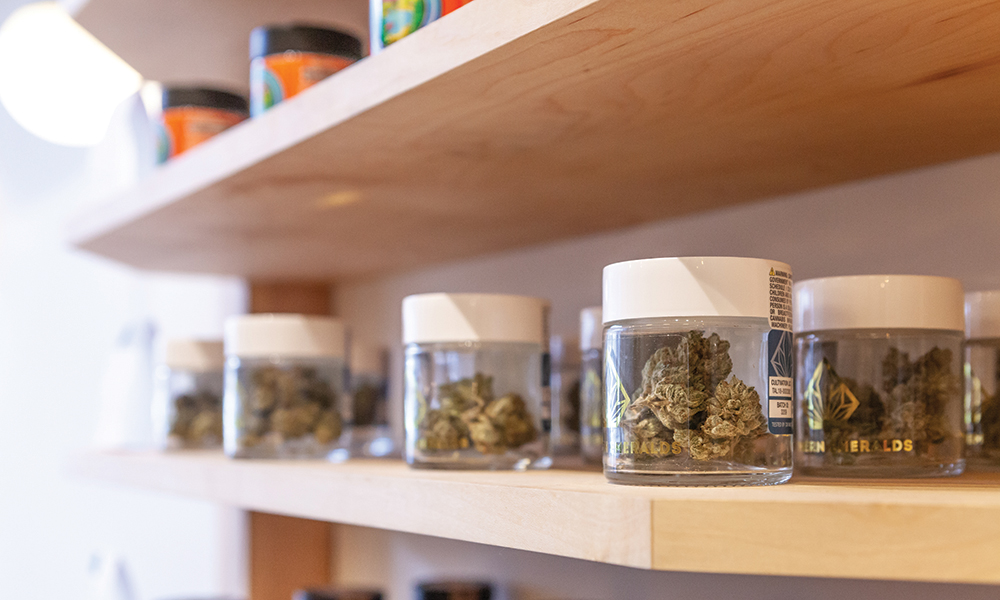
The new space is stylish but spartan, with clashing polished and raw elements that conjure the eclectic vibe of a chic converted industrial loft. Gone are the low ceilings of the previous two locations, replaced with high, vaulted ones and slick, minimalist furnishings smoothing the brutal aura of exposed concrete pillars and other utilitarian trappings. Tucked in among the merchandise, there are antique scales and other cannabis ephemera, giving a hint of the old vibe.
“The first one was your 1970s uncle’s basement spot. Then when we moved, it was the French fancy café art nouveau thing,” Olive says. He explains that they decided to try a new aesthetic in the new location, given that the old Vapor Room was “a moment of time.”
“If you got to have it and experience it, you are blessed by it,” Olive says. “It’s a new world and a new era of cannabis, and I thought it would be a disservice to try and recreate that moment.”
In addition to the hundreds of regular customers it funneled towards local businesses, the Vapor Room was the founding force behind the still-active Lower Haight Merchants and Neighbors Association. It helped fund better street lighting for the neighborhood and it supported local food pantries, free clinics and other charities. But perhaps most importantly of all, it served as the civic center of a neighborhood that was often over- looked by the rest of the city and it fought tirelessly to further the cause of safe access to cannabis medicine.
It’s hard to overstate the positive impact the OG Vapor Room had on the Lower Haight, the city, medical cannabis and my own life. It’s equally difficult overstate the pang of nostalgia I feel. The OG Vapor Room family has moved on — it’s an absence I try to fill up with words, regaling the staff with tales of the old days, as if maybe I can use verbal necromancy to reanimate that magic.
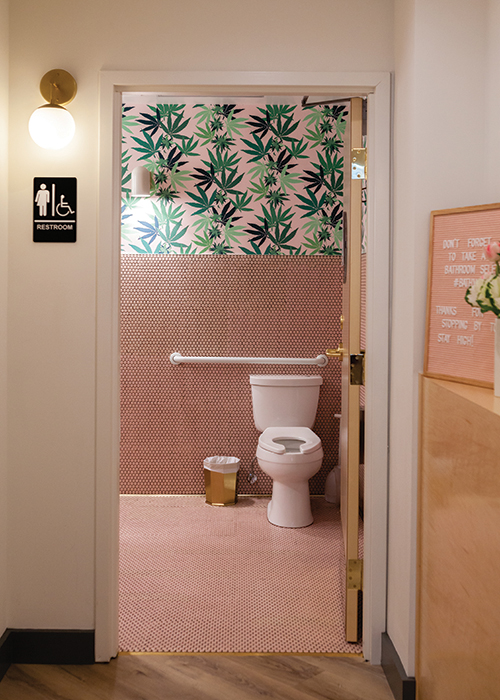
One of the obvious perks of cannabis journalism is the opportunity to enjoy a lot of excellent bud, so just between you, me and the BCC (Bureau of Cannabis Control), it’s been some time since I’ve stepped inside a dispensary and purchased anything. The flower is all pre-packaged in jars, which you can’t open be- cause “regulation,” and it’s a stark reminder of how much regulations have changed things since the deli-style service of the Prop 215 days.
Then, I spy a single, unbroken strand tying this new version of the Vapor Room to its earliest incarnation in the Lower Haight: an eighth of Bacio Gelato, grown by Sherbinski. A dispensary is, at the end of the day, about cannabis, and it’s heartening to see that in more ways than one, that element is unchanged.
As I’m rolling a joint of Gelato, a man with a black case walks in, opens the case and pulls out a tiny white dog with the look of a terrier that fell into a cotton candy machine. I light the joint and watch as the dog dances, shakes hands, give high fives and just generally delights everyone. The conversation flows freely across the small space, a whole cast of characters enjoying the improbable magic of cannabis. I look over at my wife and smile as it dawns on me that, for somebody else, this will be the Vapor Room.
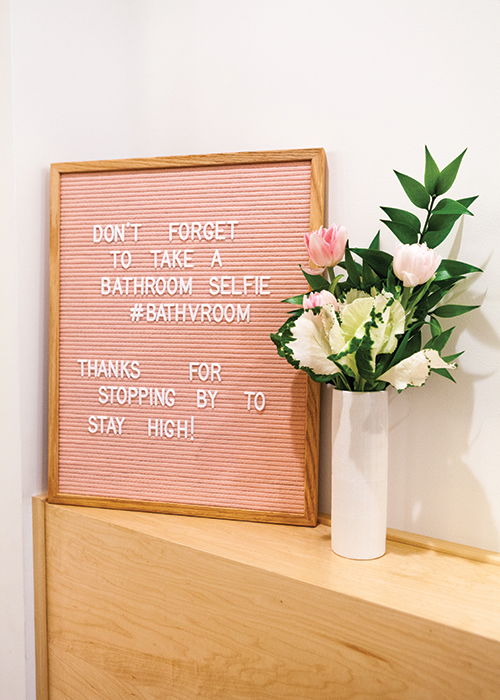
About halfway through the Gelato joint, I tilt my head back to exhale toward the ceiling, feeling the rush of heady flavors and effects overwhelming my senses. Time collapses casually — a yawning cosmic cat sprawling out across existence — and the distinction between 2019 and 2006 blurs, then vanishes, as I luxuriate in the blissful eternity inside a single moment, contemplating the lingering sheet of smoke looming lazily above everything.
TELL US, where is your favorite place to buy cannabis?
Originally published in Issue 36 of Cannabis Now. LEARN MORE



